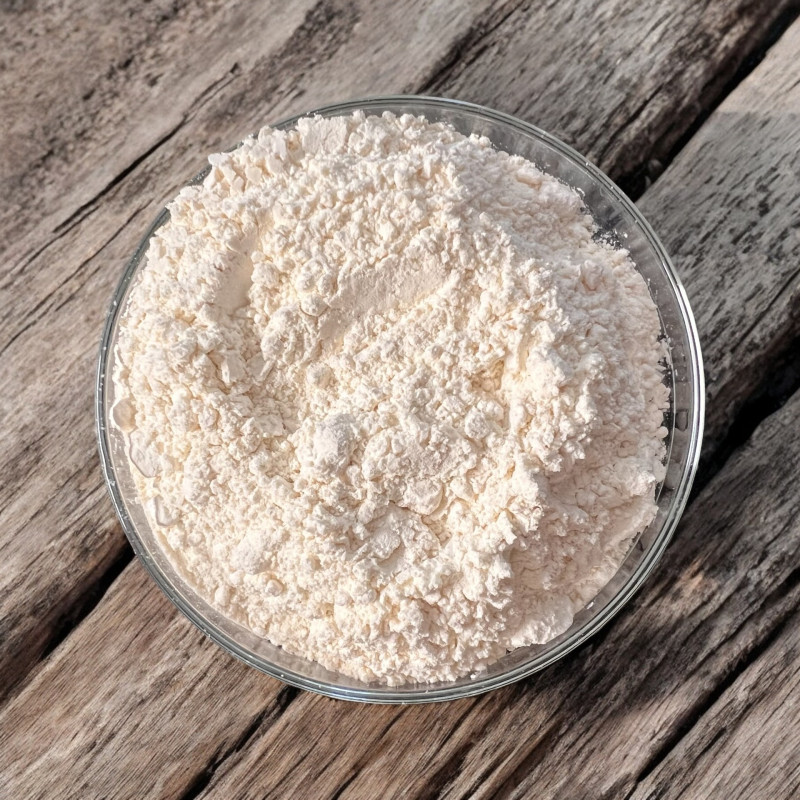
Reference: EPI2301001


In a fine, talc-like powder, it is convenient, easy to digest, and beautifully aromatic.
Ideal for sauces, salads, vegetables, meats, compound butters, and countless culinary preparations.
 Delivery
Delivery
Mondial Relay
 Returns
Returns
See conditions
 Payments
Payments
100% secure
Livré en sachet refermable
Culinary Uses:
In this fine powder form, similar to talc, garlic powder literally disappears into your dishes, leaving only its intense flavor behind! Garlic’s culinary uses are so vast that it’s impossible to cover them all here. However, garlic immediately brings to mind Provence, where it deliciously flavors most dishes: bouillabaisse, sauces, and aiolis.
Interestingly, dehydrated garlic powder (and even granulated garlic) is highly digestible, even uncooked, unlike raw garlic, making it a true delight! Use it in dishes that are either uncooked or have too short a cooking time for raw garlic to properly cook. Additionally, in sauces, soups, beverages, or anything liquid, it leaves no visible trace.
You can pair it with shallots or onions in salads and numerous other dishes.
Sprinkle it on green vegetables like green beans lightly sautéed in a bit of butter, or Provençal tomatoes (along with basil or oregano) cooked in olive oil. It’s also wonderful simply sprinkled over buttered pasta.
It’s a delight on lamb chops, too! Garlic, whether in powder or granules, is also an ingredient in several of our spice blends: rouille, chicken seasoning, pasta seasoning, and even in small amounts in Madras Curry.
Who Am I?
Scientific Name: Allium sativum
Common Names: Common garlic, culinary garlic
Garlic is a perennial herbaceous plant, with its bulbs—known for their strong aroma and taste—commonly used in Provençal cuisine. The bulb, called a "head of garlic," consists of several "cloves." The entire plant, even its flowers, has that distinctive garlic scent. There are two main types of garlic:
Autumn garlic: Planted from September to November and harvested from April to July, this includes white or purple garlic, which matures earlier but is more sensitive to cold and keeps until December or January.
Spring garlic: Planted from December to January, this pink garlic is harvested in July and keeps until the following spring.
In France, certain varieties are labeled based on the regions where they grow, and worldwide, many different varieties exist, depending on climate and soil.
Garlic is generally propagated by planting the cloves, as seed production is rare.
When cooking fresh garlic, it’s recommended to remove the sprout, as it may be less digestible than the rest of the clove. Personally, whether or not the sprout is removed, I find raw or lightly cooked garlic difficult to digest, which is why I much prefer dehydrated garlic. However, when fresh garlic is well-cooked, I can digest it easily, sprout included!
Garlic contains several vitamins (A, B1, B2, C, E), natural antibiotics, essential oils, natural anticoagulants, minerals, and trace elements. It stimulates the production of beneficial bacteria in the intestines.
A Bit of History:
Garlic has been used in food for over 5,000 years, notably in Egypt, ancient Greece, and Rome, where it was believed to have strengthening properties. Crusaders helped spread it throughout Europe, where it was credited with almost every virtue, including the power to ward off the plague!
It seems that Christopher Columbus introduced garlic to the Americas upon discovery. Today, it’s cultivated worldwide.
Throughout history, garlic has been believed to possess a range of powers, from warding off witches, vampires, and even the devil, to protecting against bad luck and storms (for sailors).
Data sheet
Reference: EPI2301001
Reference: 30204501
Reference: echalote
Reference: Harissa
Reference: badianeM
Reference: 2071570
Reference: 20211003
Reference: 3N7201902
Reference: 10N7738802
Reference: EPI2301003
Reference: EPI2301001
Reference: 20721301
Reference: 208037910
Reference: badianeE
Reference: 00033929-0001
Reference: 8N7625101
Reference: 20701706
Reference: 6L5609803
Reference: 00029083-0001

In a fine, talc-like powder, it is convenient, easy to digest, and beautifully aromatic.
Ideal for sauces, salads, vegetables, meats, compound butters, and countless culinary preparations.